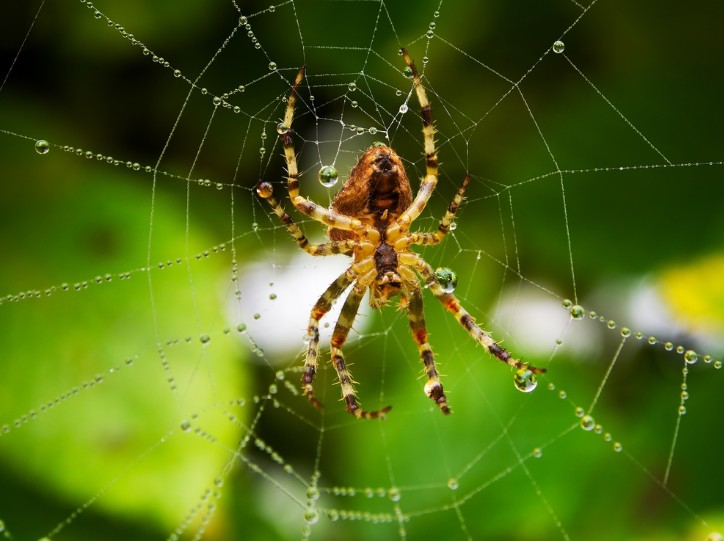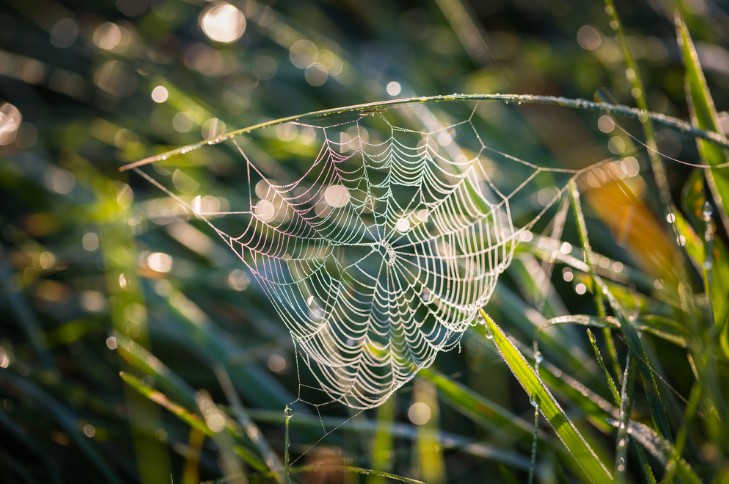Wonders of Creation
Spider Silk: The Strongest Thread in the World and the Amazing Survival Secrets of Spiders
How spiders weave webs stronger than steel, build underwater “submarines,” and outsmart predators with nature’s most ingenious designs
- Hidabroot
- |Updated

While it may surprise you, the strongest thread in the world is spider silk. To this day, even the most advanced science has not succeeded in creating threads as fine as those spun by spiders that can carry such a load.
The system of sticky threads used by spiders to catch insects is one of nature’s most brilliant inventions.
Meet the Spider
Spiders belong to a larger group of creatures called arachnids, which also includes scorpions and other eight-legged species. Spiders stand apart because of their ability to spin silk.
Webs are not only used to catch prey, but also for traveling from place to place, creating egg sacs, sealing burrows, or even wrapping prey to preserve its freshness. Spider legs are equipped with tiny claws and adhesive pads, allowing them to climb walls, walk across ceilings, and move with ease on their delicate threads without breaking them.

The Secret of Web-Spinning
Who taught spiders to weave? At the end of their abdomen are special glands that secrete a protein-based substance. This secretion is pushed through tubes and then out through spinnerets, where it instantly hardens when exposed to air, forming a fine thread.
Spiders can even lower themselves from the ceiling to the floor by producing silk as they descend. To trap prey, they coat their threads with droplets of glue. Some weave large nets strong enough to catch beetles, centipedes, and even lizards.
The most advanced web-builders are orb-weaving spiders, whose intricate circular webs are admired not only for their effectiveness but also for their beauty and perfect symmetry. Some species even spin a long thread tipped with a shiny drop of glue. Flying insects, drawn to the glistening bead, are ensnared, and the spider earns its next meal.
Perhaps the most surprising spider in the world is the European water spider which lives underwater inside a bell-shaped web filled with air. Within this bubble, it lives like in a tiny submarine, safe from predators.

Outsmarting Predators
Spiders fear predators such as lizards, birds, and certain wasps. Even larger spiders will sometimes prey on smaller ones if food is scarce.
To avoid threats, many spiders construct elaborate burrows, often with false entrances designed only to confuse attackers. Some burrows even have multiple chambers and emergency exits for quick escape. In some cases, spiders cover their burrows with silk “doors” that perfectly match the color and texture of the surrounding soil. Once sealed, the entrance becomes almost invisible.
Can such an intricate survival strategy really be the product of a tiny spider brain — or does it clearly point to a Designer who provided every tool necessary for its survival?
Lessons from the Smallest Creatures
Even from the smallest of creatures we can learn the most important lessons: to look closely at nature and see in it the remarkable wisdom and design that sustain life.

